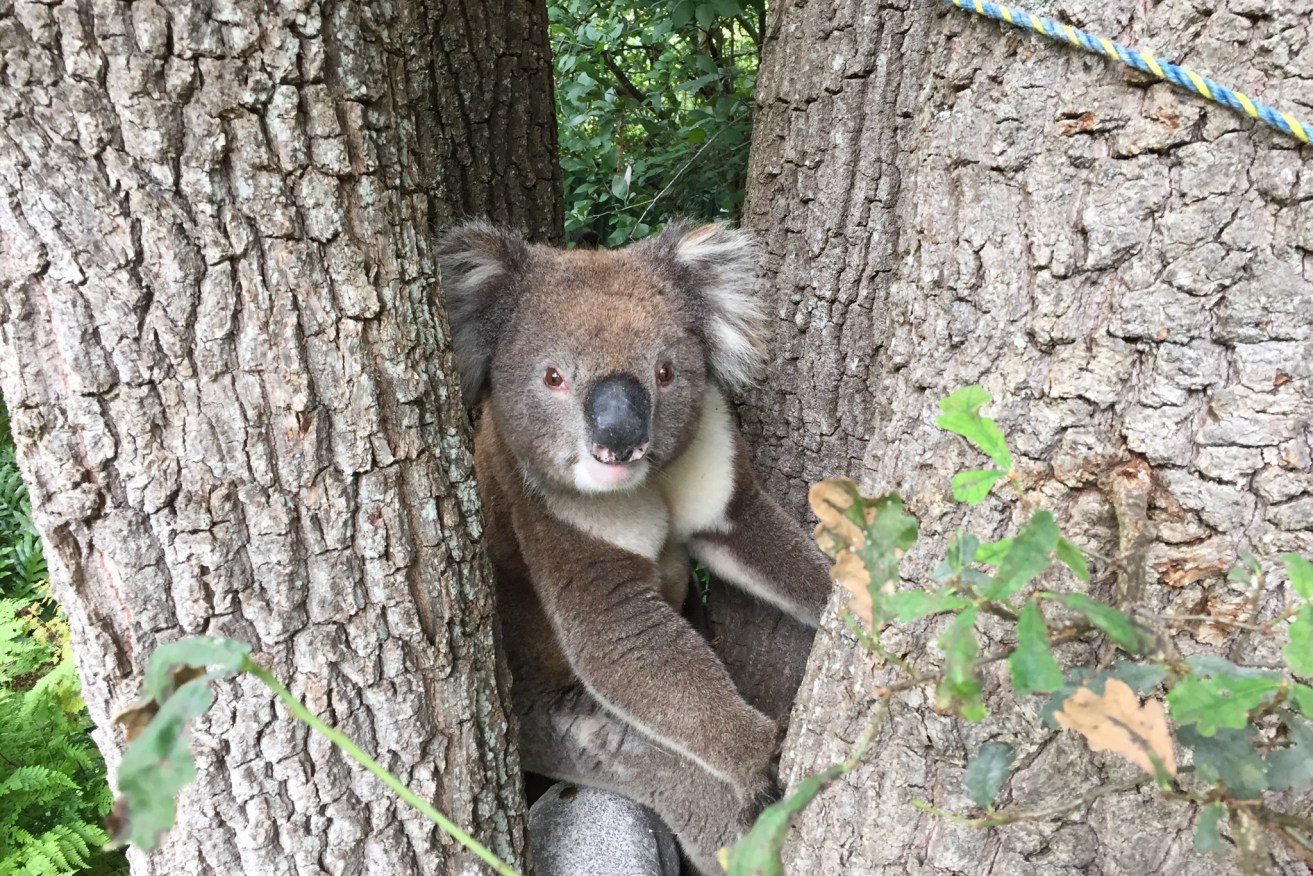‘Endangered’ koala ruling expected to boost SA research efforts
South Australian koala experts have welcomed the federal government decision to formally declare the species endangered in Queensland and NSW, saying it could boost local efforts to ensure the marsupial’s survival.

Koalas are commonly seen in the Adelaide Hills. Photo Dave Eccles/InDaily
Federal Environment Minister Sussan Ley on Friday announced koalas will be listed as endangered across NSW, Queensland and the ACT, to protect populations devastated by disease, bushfires and deforestation.
University of Adelaide koala expert Dr Natasha Speight told InDaily that although the ruling did not include South Australian koalas, the move could benefit research and conservation across the country.
“A lot more momentum is going to gather behind conservation for that species in habitat restoration and protection,” she said.
“As a researcher with a veterinary background, I can see there’s going to be a lot more support for trying to understand the diseases that affect koalas.”
Southern koala populations in South Australia and Victoria have long been regarded as in a much healthier state than their northern counterparts, but Speight said there is uncertainty about how local populations are faring in the wake of the Black Summer bushfires in 2019-20.
“In SA there was a significant effect from bushfires, particularly in Kangaroo Island where there was over a 80 per cent reduction in population — down to an estimated five to ten thousand,” Speight said.
She added that major fires in the Mt Lofty Ranges had impacted on SA’s other major habitat for koalas in the Adelaide Hills.
Speight hopes to see more interstate research collaborations in the wake of the endangered ruling. She has been researching the impact of bushfires on South Australia’s koalas, as well as the reasons for their lower susceptibility to chlamydia outbreaks that are devastating populations in the eastern states.
The state government is collaborating with Flinders University and conservation charity Koala Life to use drones and facial recognition technology to undertake a count of the state’s koalas in the wake of the bushfires.
Koala Life Chair Professor Chris Daniels told InDaily that he suspected population numbers remain healthy in the Adelaide Hills, but warned of the danger of South Australia becoming “the last significant group left in the world”.
Daniels said sanctuary populations suffer from inbreeding and are vulnerable to disasters, as seen in the Kangaroo Island fires.
“They seem to be recovering there now but the risk is they recover faster than their trees, which creates its own problem,” he said.
Daniels expressed hope the endangered ruling for northern koalas would encourage more efforts to understand why southern koalas in South Australia and Victoria are in a relatively healthier state.
“I’m worried all the effort will go into continuing what hasn’t worked in NSW and Queensland, and they need to consider what other strategies are out there,” he said.
Koala populations in NSW have declined by between 33 and 61 per cent over the last two decades, while Queensland koala populations have at least halved since 2001.
In addition to an apparent greater vulnerability to chlamydia and retrovirus, northern koalas have smaller bodies than southern populations and are more vulnerable to dogs.
Climate change, drought, fires and deforestation have also impacted on their habitat.
Koala Life is working on a breeding program at Cleland Wildlife Park that is pairing koalas from Victoria’s Strzelecki Ranges with South Australian koalas, including chlamydia-free koalas rescued from the Kangaroo Island bushfires.
Daniels said that if it came to it, the program could look to repopulate the habitat of northern koalas with southern varieties.
“We might have to stop worrying about whether one population is different from the other, as once it is gone it is gone, we must look to protect the species,” he said.
“We must work out what to do with genetic outbreeding programs, and potentially have a discussion about how to rewild back if they do disappear in Queensland and NSW.”




